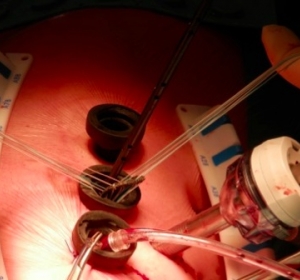Traditionally this procedure requires a median sternotomy. The VATS technique allows this type of surgery to be performed in a minimally invasive way.
Who is a candidate for VATS of the mitral valve?
In principle every patient with a mitral valve condition is a candidate.
VATS Mitral methodology
The thoracoscope with the camera and instruments especially developed for this technique are inserted through three small 1-cm incisions. During the VATS procedure the patient is connected to the heart-lung machine through the blood vessels in the groin. Once the valve can be accessed, the surgeon examines the valve and then decides whether to repair or replace it.
Results
The benefits of minimally invasive mitral valve surgery are:
- Less postoperative pain
- Less blood loss
- Lower risk of infection
- Smaller scars and a nice cosmetic result
- Shorter hospital stay
- Faster recovery
Conclusion
VATS Mitral is a safe technique that offers the above benefits. These benefits do not compromise the patients’ short and long term survival compared with the group of patients undergoing mitral valve surgery the conventional way (median sternotomy).
The annuloplasty ring is inserted through the small 2-cm hole using the parachute technique.




